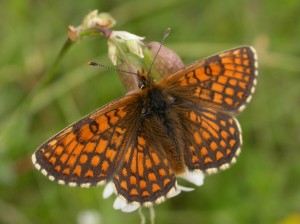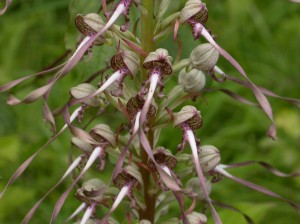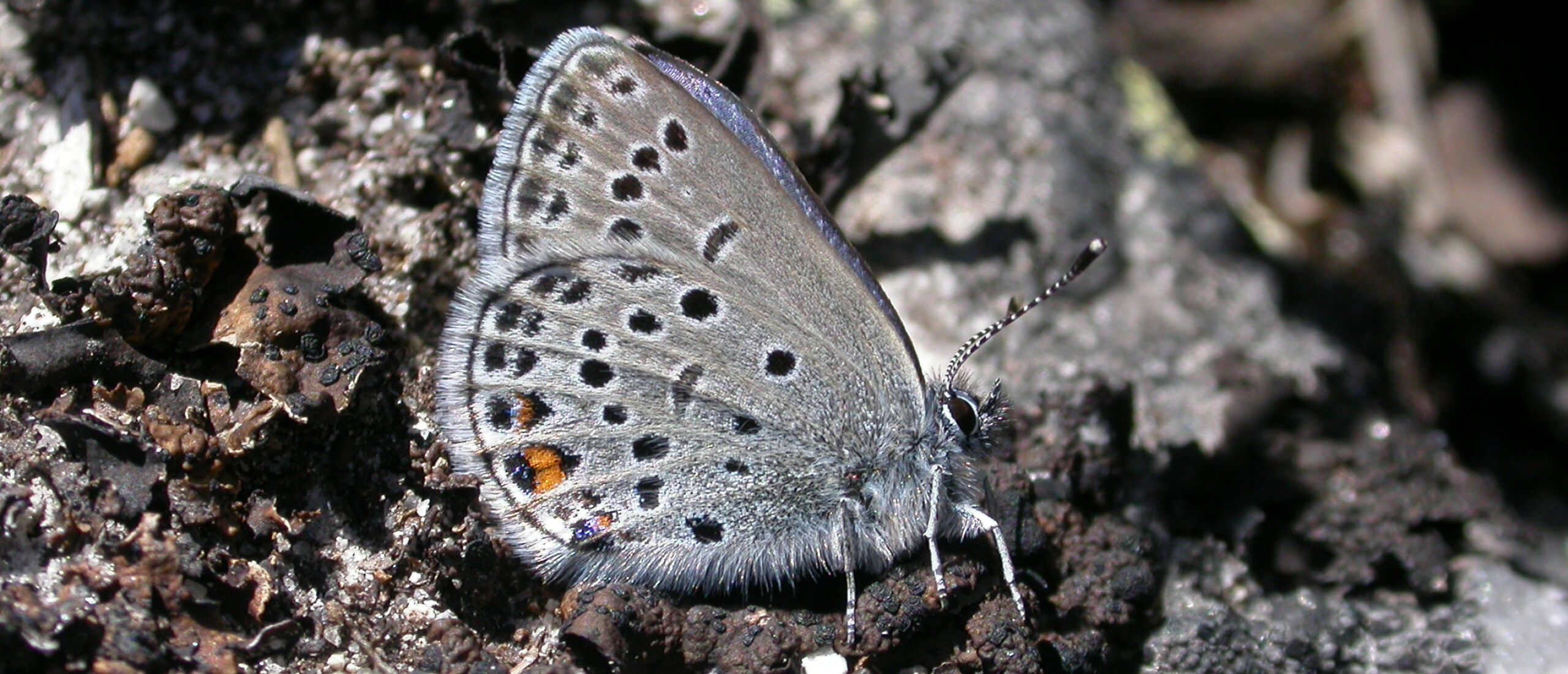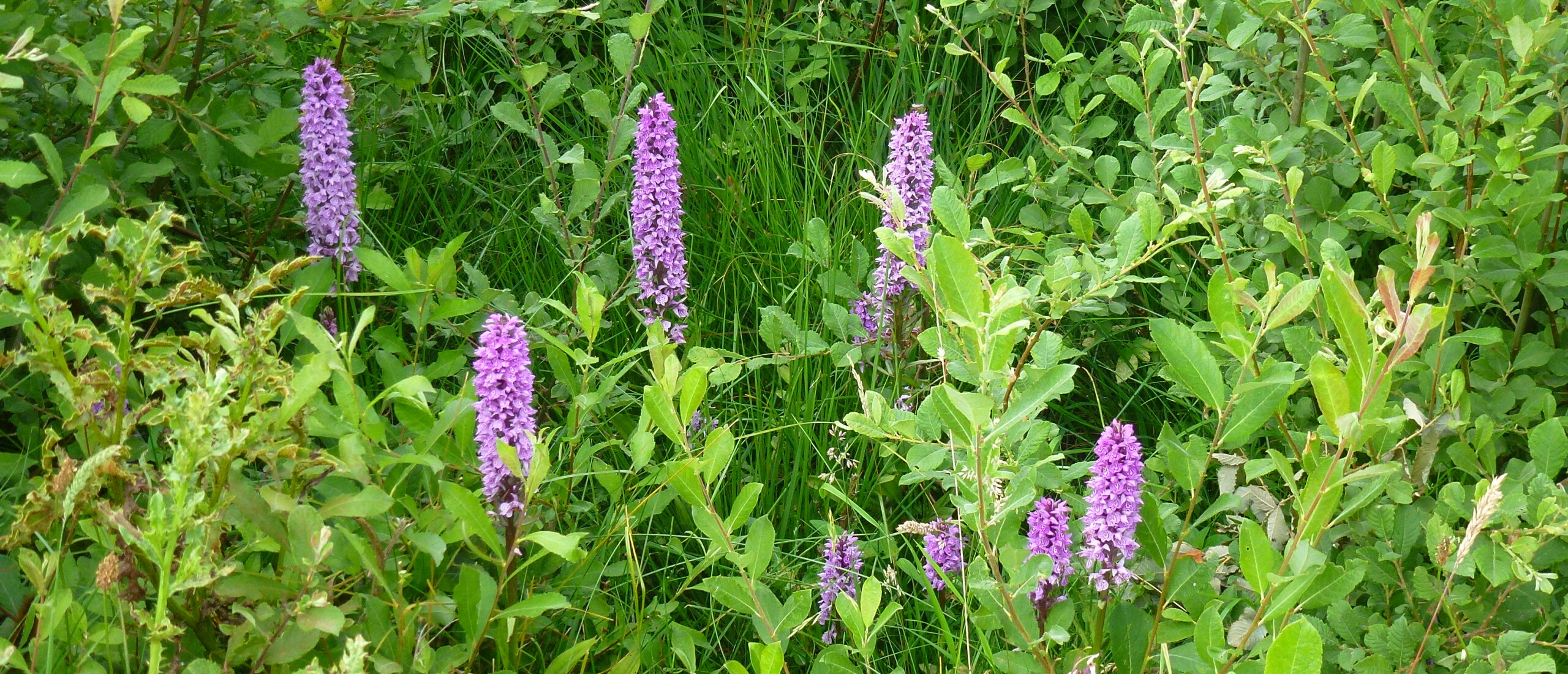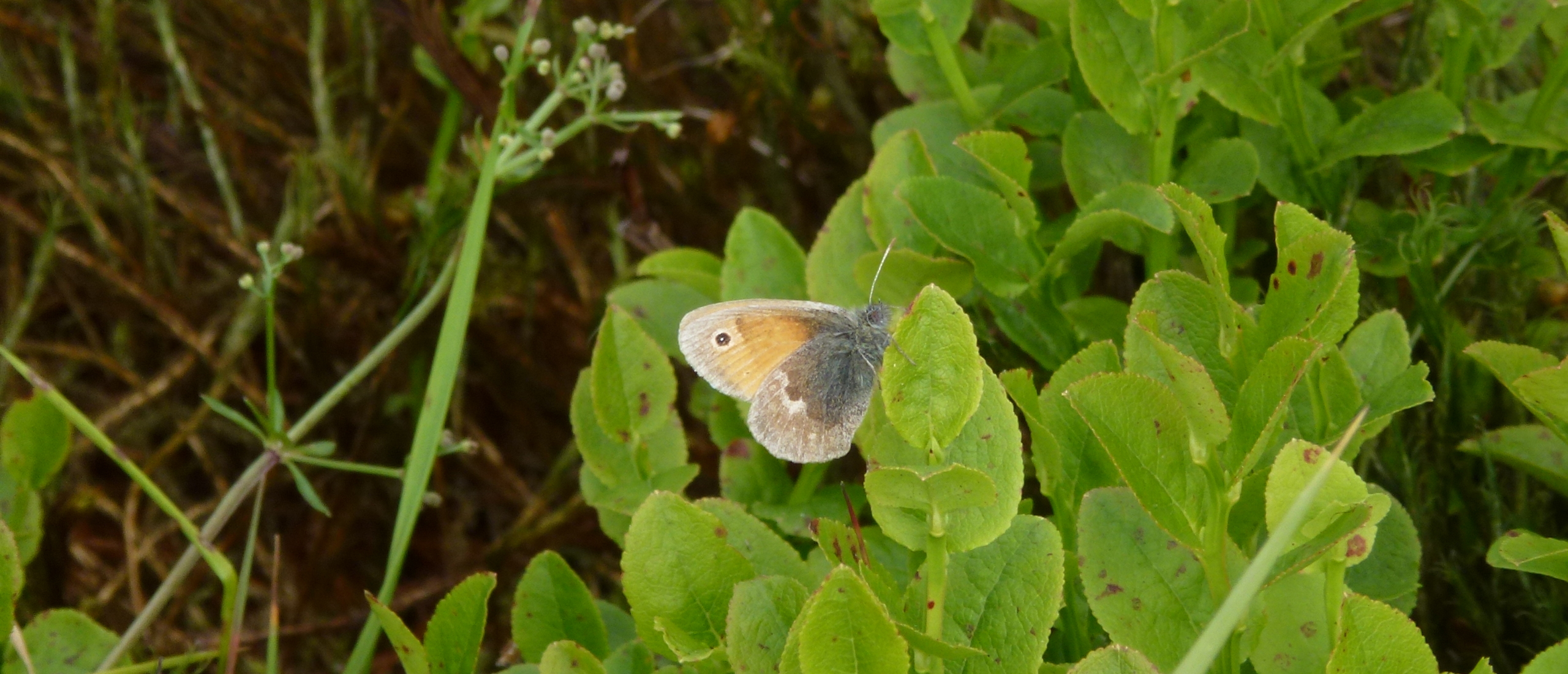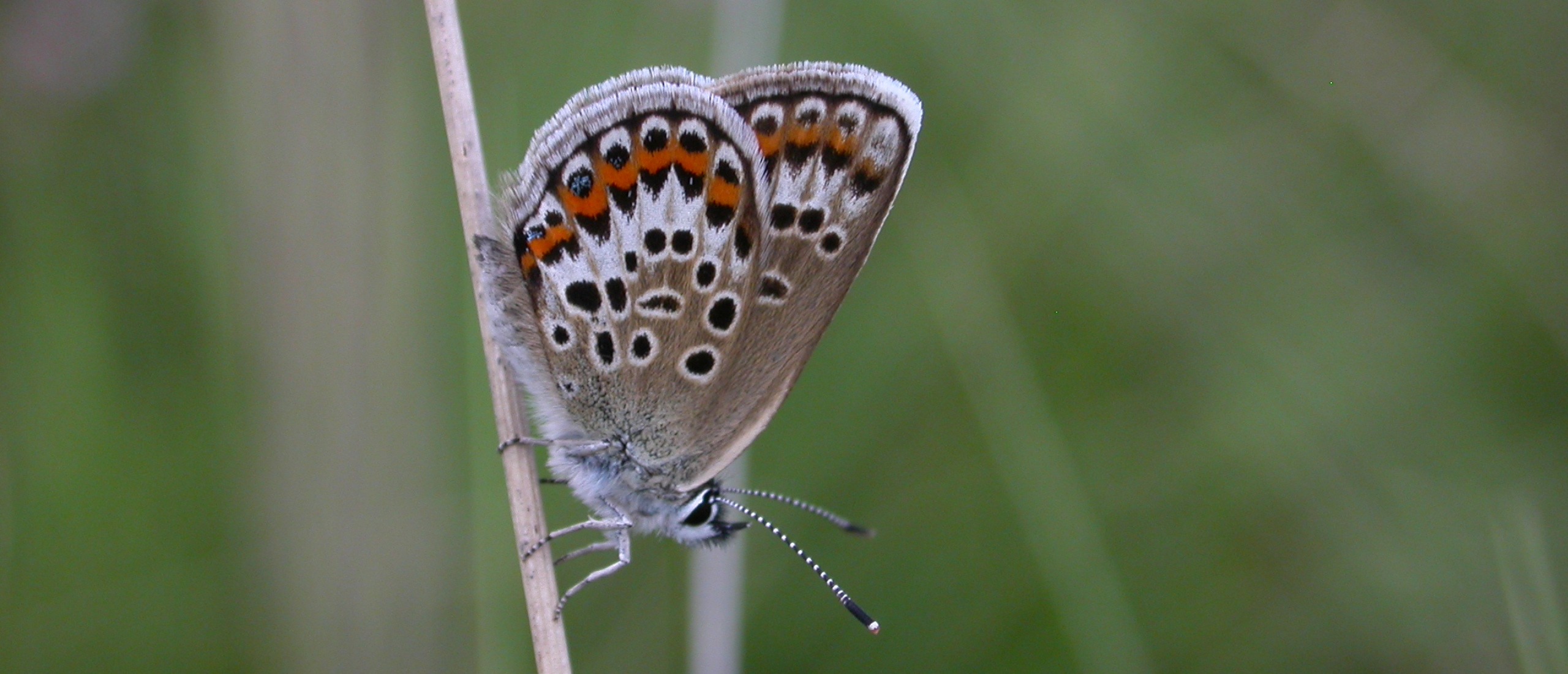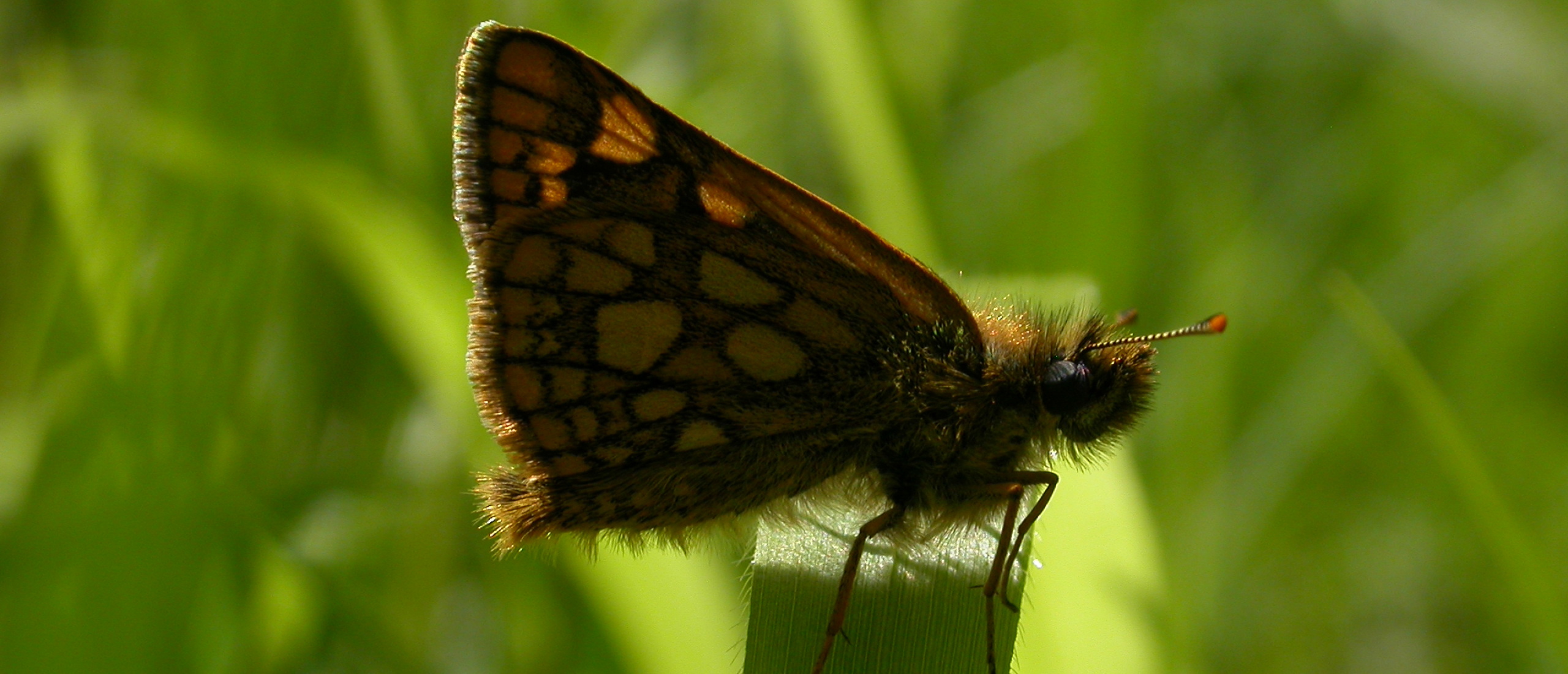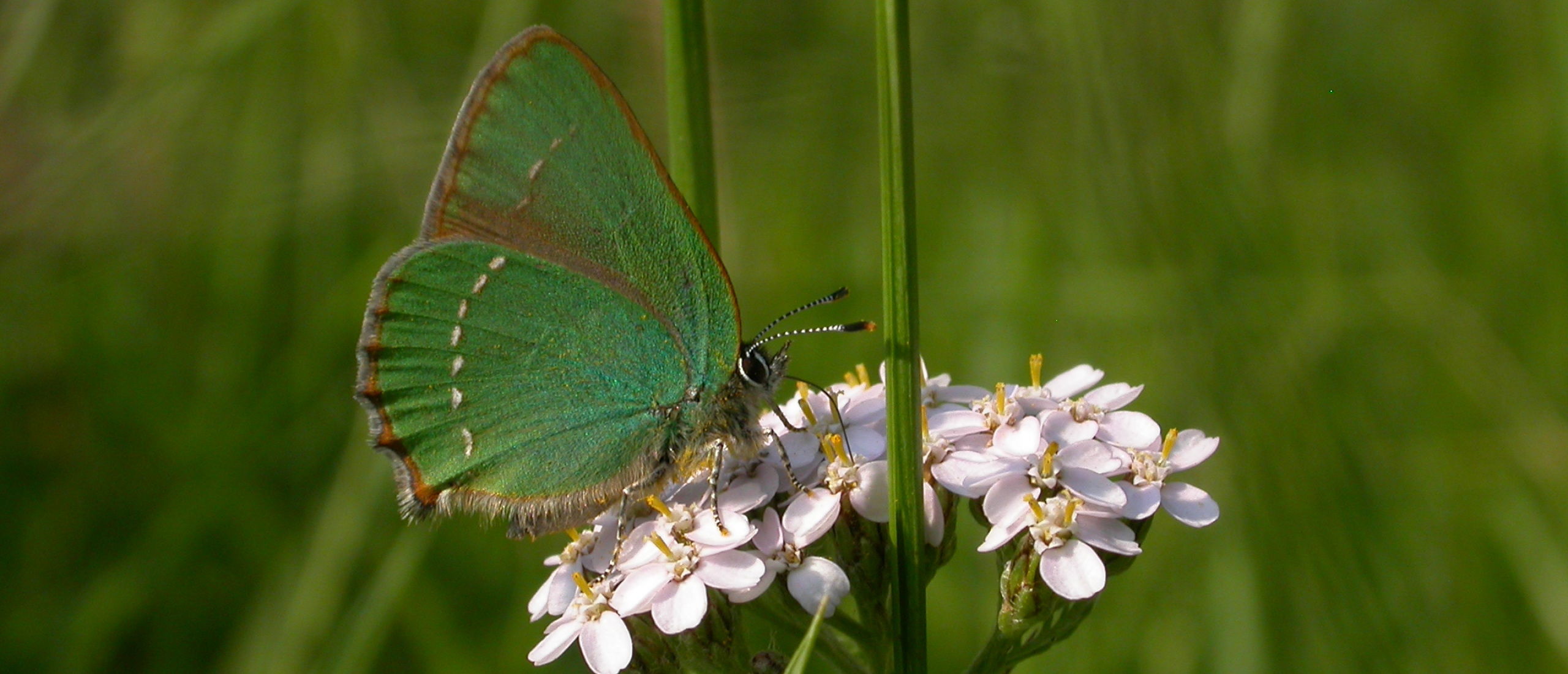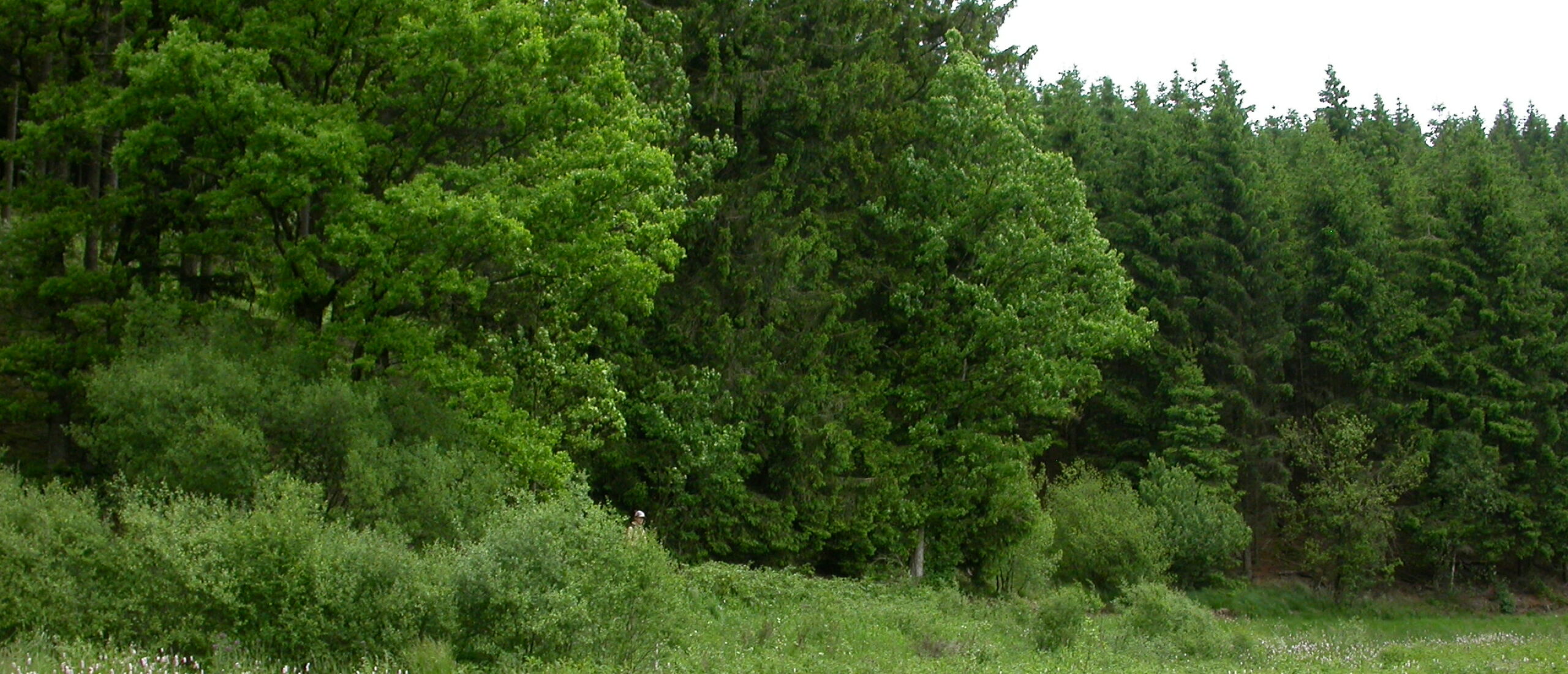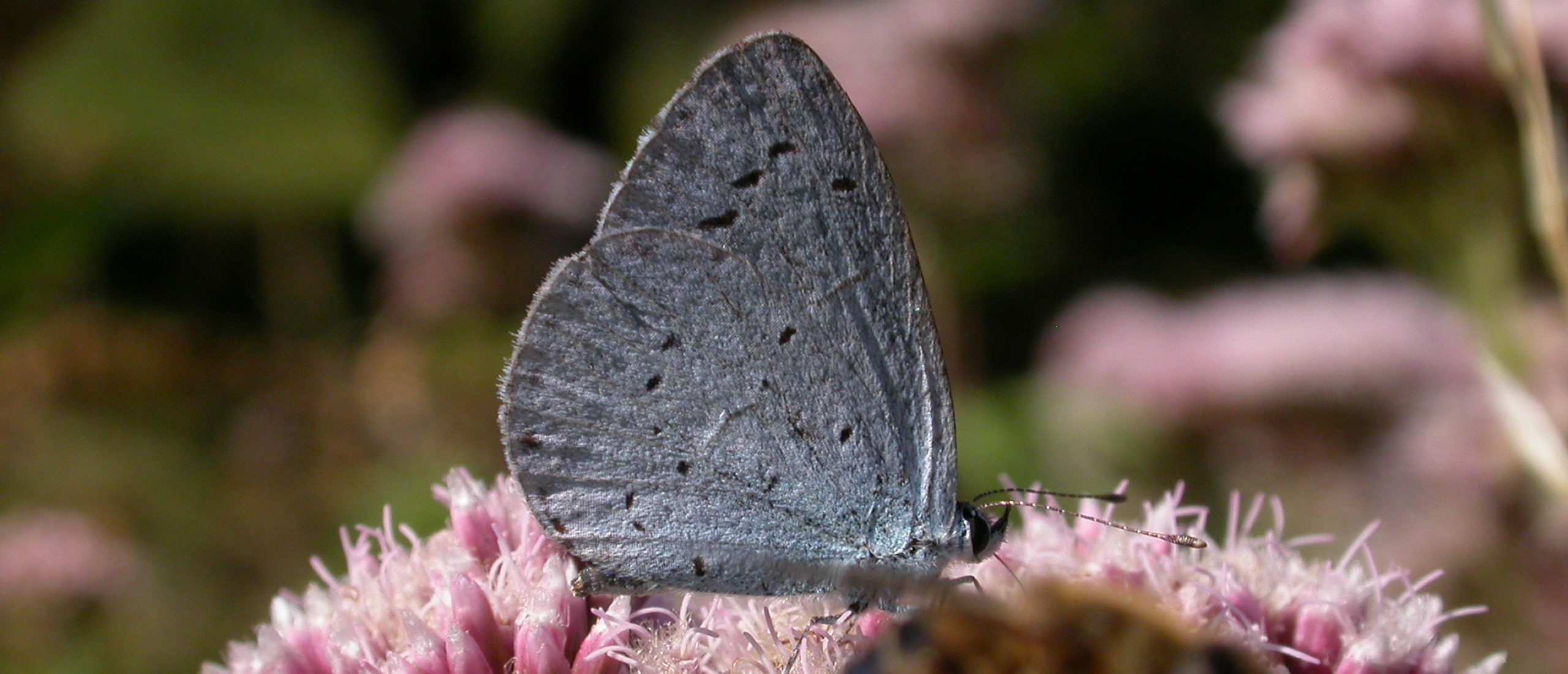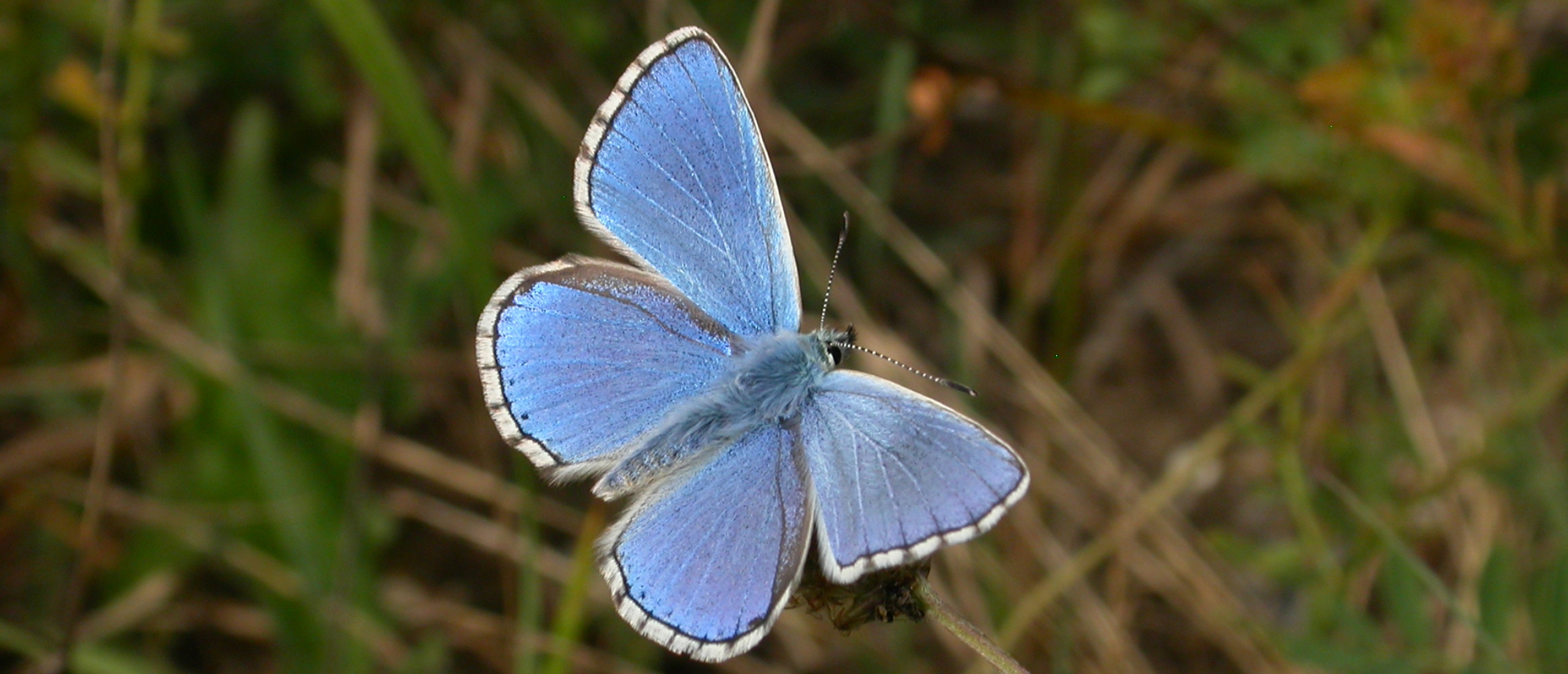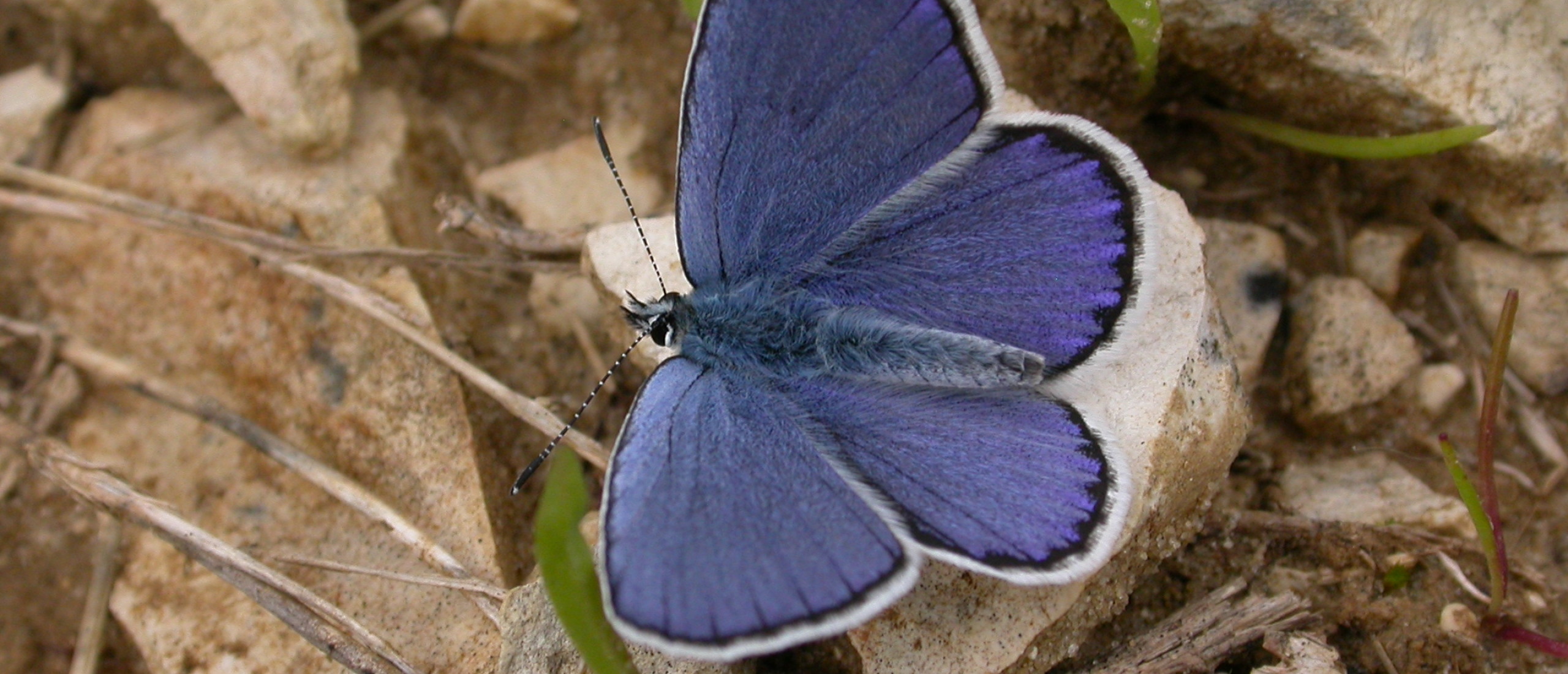
No defence cuts please - for the sake of the butterflies! This weekend has seen me out in the field, working hard to catch up on some missing Spring butterfly species, for which it was my last chance of the year. Again I was busy in northern France and southern Belgium. Saturday was dull and gloomy until the late afternoon, when the weather cleared a little, and I paid a quick visit to my favourite forest track, where I added four species to my list, namely Meadow Brown, Maniola jurtina, Ringlet, Aphantopus hyperanthus, several Pearly Heaths, Coenonympha arcania, and numerous Lesser Marbled Fritillaries, Brenthis ino. The last tired-looking Marsh Fritillaries, Euphydryas aurinia, and Small Pearl-bordered Fritillaries, Clossiana selene, were also in evidence, and I also spotted a small, dark butterfly flitting around the trees high above a patch of Sloe bushes, almost certainly a Black Hairstreak, Satyrium pruni, but I was unable to gain a satisfactory look at it before the sun disappeared again.
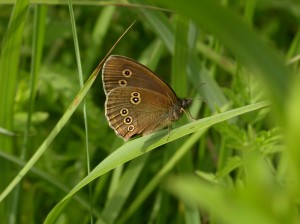 A Ringlet lurking in the long grass
A Ringlet lurking in the long grass
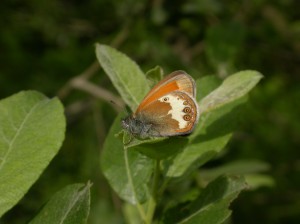 A Pearly Heath, lying on its side to catch the evening sunlight
A Pearly Heath, lying on its side to catch the evening sunlight
 A Lesser Marbled Fritillary showing its characteristic black and white chequered fringes
A Lesser Marbled Fritillary showing its characteristic black and white chequered fringes
On the Sunday, which looked more promising weather-wise, I drove an hour and a half or so southwards to a truly wonderful wildlife area, the military camp and training area at Sissonne, in the northern Champagne region of France. This 5,500 hectare oasis of wilderness amid a sea of intensive agriculture is an absolute haven for birds, butterflies and wild flowers, never having been ploughed up and retaining the original flora and fauna of this region as it was before the vast fields of maize, rapeseed and wheat took over the landscape. Montagu's Harrier, Woodlark, Black Woodpecker and Bee-eater are among the bird species that thrive in these military zones. It was not long before I had parked up beside the one public road that crosses the closed area (officially stopping is not permitted, and I have been challenged here in the past for brandishing my cameras, but Sundays are a good bet as most military personnel are having a day off). The sea of wild flowers was a sight to behold, and I was soon ticking off such southern species as Nickerl's Fritillary, Mellicta aurelia, Knapweed Fritillary, Melitaea phoebe, and Glanville Fritillary, Melitaea cinxia.
Other new species here were Dark Green Fritillary, Argynnis aglaja, and Clouded Yellow, Colias croceus, but it was the "Blues" that were the most impressive, among which the Silver-studded Blue, Plebejus argus, Small Blue, Cupido minimus and Common Blue, Polyommatus icarus were out in force. But it was the beautiful Reverdin's Blue, Plebejus argyrognomon, that stole the show. This butterfly has an isolated colony in the this area, and can be found only where its larval foodplant, the Crown Vetch, Coronilla varia, grows, as it does here in large pinkish-purple patches.
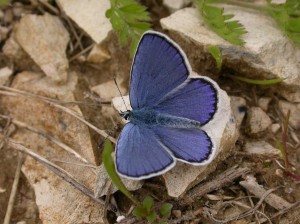 A pristine newly-emerged male Reverdin's Blue
A pristine newly-emerged male Reverdin's Blue
From time to time, rumours circulate that cuts to the defence budget may necessitate the closure of this or one of the other two large military training areas in the Champagne region, but so far this has not come about - and long may it continue not to happen, as the intensive cereal producers would no doubt be rubbing their hands with glee at the thought of bringing such a vast area of potentially prime agricultural land under the plough. Misguided campaigners in the UK would also like to see the Ministry of Defence surrender large areas of military training ground, but there again, jewels such as Salisbury Plain and the Lulworth coast exist only thanks to their restricted status, harbouring as they do some of the country's most pristine and unspoiled habitats. From here, I headed a short distance to the south-west, entering an area of low limestone hills, holding a mix of picturesque villages, extensive woodlands and natural grasslands. Here I walked along a forest ride, but apart from a single White Admiral, Limenitis camilla, remarkably few butterflies were to be seen. A highlight, however, was a small group of the extraordinary Lizard Orchid, Himantoglossum hircinum, growing in an area specially managed for orchids, where I was able to observe five different species on this occasion.
Monday morning saw me conducting a last, desperate search for the Black Hairstreak, Satyrium pruni, which should by now be virtually over for the year. I returned to the same patch of Sloes where I thought I had seen it on the Saturday, and after numerous brief sightings of a small dark butterfly skittering over the Sloes and up some Aspens behind, I finally clinched it when it landed briefly to warm up in the morning sunshine. I even managed to obtain a poor photograph of it as it aligned itself with the sun to catch the maximum heat, leaning over on its side as both hairstreaks and some Satyrid butterflies do.
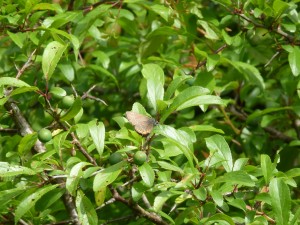 A poor shot of the Black Hairstreak as it was soaking up the morning sunshine
A poor shot of the Black Hairstreak as it was soaking up the morning sunshine
In the afternoon I headed over the border into Belgium, to another of my most favoured haunts, where little was to be seen in this strange summer we are experiencing, even though this area normally hosts numerous butterflies. After a lengthy search I did manage to locate about five Heath Fritillaries, Mellicta athalia, and just one False Heath Fritillary, Melitaea diamina, where in previous years I have seen many. I can only hope this is not an indication of a long-term decline, and that perhaps more individuals will emerge later - though this seems unlikely as those individuals that were flying were already looking as though they had been out for some time.
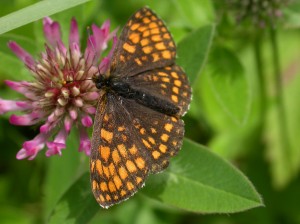 A Heath Fritillary, already looking rather worn, though it should be freshly on the wing
A Heath Fritillary, already looking rather worn, though it should be freshly on the wing
Butterfly list as of 2 July: 59 species


